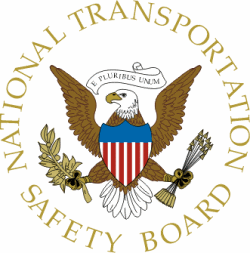Pilot And Passenger Fatally Injured When C182 Impacted Trees
The NTSB has released a probable cause report from an August 2, 2014 accident involving a Cessna 182F engaged in banner towing in New York state. Two people were fatally injured in the accident.

According to the report, on August 2, 2014, at 1742 eastern daylight time, a Cessna 182F, N1DZ, was destroyed when it collided with a tree and terrain during climbout following a banner pick-up at Heber Airpark (K30), Ganesvoort, New York. The commercial pilot and passenger/observer were fatally injured. Visual meteorological conditions prevailed, and no flight plan was filed for the flight, which departed K30 about 1737. The banner tow flight was conducted under the provisions of Title 14 Code of Federal Regulations Part 91.
The banner tow airplane departed, circled, and returned to the airport for the banner pickup. The operator said he was using a handheld radio and was prepared to provide flightpath adjustments to the pilot for the banner pickup, but the approach was “perfect” and the pickup was successful. He announced over the radio that the banner was captured and “looked good,” but the airplane then climbed at a much shallower angle than anticipated and drifted left of the runway heading. The airplane subsequently collided with a treetop, rolled inverted, and impacted the ground in a nose-down attitude. The owner of the property where the airplane came to rest was in her yard facing the runway when her attention was drawn to the sound of the airplane as it approached; the engine sounded normal and was smooth and continuous until impact. She stated that the airplane was in a level attitude when it struck the treetop, rolled inverted, and struck the ground nose first.
Detailed examinations of the airframe and powerplant revealed no preimpact mechanical anomalies that would have precluded normal operation. The throttle and mixture controls were in the full-forward position, the propeller control was three-fourths forward, and the carburetor heat control was in the “on” position. Assuming these as-found positions were the same at takeoff, the engine and propeller would have provided less-than-full power and thrust.
A review of the pilot’s logbook revealed he had accrued 333.1 total hours of flight experience, of which 26 hours were in the accident airplane make and model. In the 30 days before the accident, the pilot had had flown 1.8 hours, none of which was in the accident airplane make and model.
According to FAA Advisory Circular AC-61-23C, Pilot’s Handbook of Aeronautical Knowledge: “The effect of torque increases in direct proportion to engine power, airspeed, and airplane attitude…. During takeoffs and climbs, when the effect of torque is most pronounced, the pilot must apply sufficient right rudder pressure to counteract the left-turning tendency and maintain a straight takeoff path.” It is likely that the pilot did not apply enough right rudder to counteract the left-turning tendency of the airplane during climb.
The National Transportation Safety Board determined that the probable cause of the accident to be the pilot’s failure to maintain directional control during initial climb following a banner pick-up, resulting in collision with a tree.
 Aero-FAQ: Dave Juwel's Aviation Marketing Stories -- ITBOA BNITBOB
Aero-FAQ: Dave Juwel's Aviation Marketing Stories -- ITBOA BNITBOB NTSB Prelim: Rutan Long-EZ
NTSB Prelim: Rutan Long-EZ ANN's Daily Aero-Term (12.05.25): Hazardous Weather Information
ANN's Daily Aero-Term (12.05.25): Hazardous Weather Information Aero-News: Quote of the Day (12.05.25)
Aero-News: Quote of the Day (12.05.25) Airborne-Flight Training 12.04.25: Ldg Fee Danger, Av Mental Health, PC-7 MKX
Airborne-Flight Training 12.04.25: Ldg Fee Danger, Av Mental Health, PC-7 MKX



